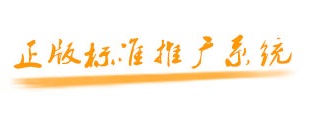ISO近日发布ISO 14024生态标签标准
消费者非常关注他们购买的商品,环保标签和声明能帮助消费者识别那些被证明“环境友好”的产品或服务。但自1999年ISO 14024制定了生态标志的第一个国际要求开始,世界环境发生了翻天覆地的变化,这种变化可以从消费者增加的需求中看出来。新近发布的标准将会帮助满足这些期望。
生态标签的出现源于全球政府、企业及公众对环境保护日益增长的关注。随着企业逐渐认识到对于某些产品和服务行业来说,环境问题可以转化成市场优势,各种各样的环境宣言、声明及标签不断涌现,如自然的、可回收的、生态友好的、低能耗的和可再生的材料等等,这些都强烈吸引着那些通过消费选择寻找方法降低自身对环境影响的消费者,但同时也带来了混乱,且很多人持怀疑态度。因此需要新版ISO 14024环境标签和声明——类型I 环境标签的原则和程序来帮助理解这一切。
修订这项标准的工作组召集人Björn-Erik Lönn表示:“过去20年间,越来越多的人使用类型I生态标签,联合国环境署及其它机构推进的新方案正在向更多国家和市场扩散这一概念。结果肯定是双赢:对于消费者,生产者和环境是可信的类型I生态标签。过去,贴有生态标签的大多是消费品,现在,第三方会根据产品的生命周期,核验公共环境要求,在此基础上许多服务行业(从酒店到清洁公司)也被贴上‘生态标签’。”
ISO 14024:2018指的是类型I环境标签计划,这些计划是自愿性的,可以由地区级、国家级或国际级的公共或私营机构运营的。它为发展类型I环境标签计划,确立了评估及证明标签的符合性原则和程序,包括产品种类的选择、产品环境标准及产品功能特征。它也为标签的授予设立了认证程序。
Lönn指出,“这个最新修订本旨在加强用于生态标签及定义审核人能力的事实和文件的指南,让指南符合ISO14020指南中提到的其它类型环境标签要求。1999年版标准的核心原则和规定一直未变,因为它们全面地描述了类型I生态标签在全世界范围内取得的成就。”
ISO 14024为 类型I生态标签设立了严密的框架及完善的指导方针,2018年新版标准支持这些标签在不同市场中针对各种产品的强大地位。其目的是确保执行I型生态标签项目时的透明性和可信性,并统一适用于这些项目的原则和程序。最后,Lönn 称“总之标准就是关于为市场提供正确而又值得信任的环境信息。”
ISO 14024:2018是由技术委员会ISO/TC 207环境管理和分技术委员会SC 3环境标签制定,其秘书处由ISO澳大利亚成员即澳大利亚标准协会承担。
New version of ISO 14024 on ecolabelling just published
Consumers have high concerns about what they buy and environmental labels and declarations can help them identify those products or services proven “environmentally preferable”. But the world’s environmental context has changed dramatically since 1999 when ISO 14024 laid down the first international requirements for ecolabelling - a change that is mirrored by heightened consumer demands. A new updated version of the standard will help meet these expectations.
Ecolabelling found its origins in the growing global concern for environmental protection by government, business and the general public. As companies have come to recognize that environmental concerns may be translated into a market advantage for certain products and services, various environmental declarations, claims and labels have emerged, such as natural, recyclable, eco-friendly, low-energy, recycled content, and so forth. These have exerted a powerful attraction on consumers looking for ways to reduce environmental impacts through their purchasing choices, but they have also led to some confusion and scepticism. Hence why a new version of ISO 14024, Environmental labels and declarations - Type I environmental labelling - Principles and procedures, was needed to help make sense of it all.
Björn-Erik Lönn, Convenor of the working group that revised the standard, explains: “During the past 20 years, the use of ecolabels Type I has increased and the concept is now spreading to more countries and markets in the form of new initiatives impelled by UN Environment and other organizations. The result is a definite win-win-win: a credible ecolabel Type I for consumers, producers and the environment alike. These ecolabels used to cover mostly consumer goods, but now a wide range of services, from hotels to cleaning companies, can be “ecolabelled” based on third-party verification of public environmental requirements determined according to life-cycle considerations of the product.”
ISO 14024:2018 refers to Type I environmental labelling programmes, which are voluntary and can be operated by public or private agencies at the national, regional or international level. It establishes the principles and procedures for developing Type I environmental labelling programmes, including the selection of product categories, product environmental criteria and product function characteristics, and for assessing and demonstrating compliance. It also establishes the certification procedures for awarding the label.
“This latest revision aims to strengthen the guidelines for facts and documentation used for ecolabelling and defining the competence of verifiers, putting them in line with requirements for other types of environmental labels mentioned in the guidelines of ISO 14020,” says Lönn. “The core principles and descriptions of the original 1999 version have been kept unchanged as they fully describe the work that Type I ecolabels so successfully do all over the world.”
ISO 14024 sets a rigorous framework and well-functioning guide for Type I ecolabels and the new 2018 version supports the strong position these ecolabels hold in different markets and for a huge variety of products. The objective is to secure transparency and credibility when implementing Type I environmental labelling programmes and to harmonize the principles and procedures applicable to these programmes. In the end, “it’s all about having correct and highly trustworthy environmental information in the marketplace,” says Lönn.
ISO 14024:2018 was developed by technical committee ISO/TC 207, Environmental management, subcommittee SC 3, Environmental labelling, whose secretariat is held by SA, ISO’s member for Australia.
版权所有 侵权必究
- 主管:国家标准化管理委员会
- 主办:国家标准化管理委员会标准信息中心
- 运营:北京中标赛宇科技有限公司
- 经营许可证编号 京ICP证 号
- 盗版侵权 举报热线:400-650-6190
网站地图
- 国家标准化管理委员会
友情链接
- 中国科技资源网
关于我们
- 技术团队
- 合作伙伴
- 法律声明
- 知识产权





